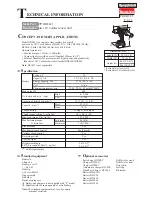
11
Do sprinkle a little flour or cornmeal to stop the pizza
sticking to the stone.
Do keep fillings away from the pizza edge, food spills may
spoil the pizza stone.
Do transfer your pizzas to the stone with a pizza paddle (not
supplied). Remove the pizza from the stone to the table/
board for cutting.
Do lower the burners directly under the stone, this will allow
the pizza to cook more evenly.
Do check after 10 minutes by raising the hood slightly, be
aware of a possible heat rush coming from within as you lift
the hood.
Do not remove the pizza stone from the BBQ with oven
mitts directly after cooking. The pizza stone reaches a very
high temperature, wait for the pizza stone to cool naturally.
Do lightly oil the pizza stone after each cooking session.
FLARE-UP CONTROL
Flare-ups occur when meat is barbecued, and its fats and juices
fall upon the flame tamers. The smoke from some flare-up helps
give cooked meat its barbecued flavour, but excessive flare-up will
result in meat being burned. To control flare-up, it is advisable to
trim away excess fat from meat and poultry before grilling. Also, the
burners should always be placed on the low setting during cooking.
Finally, extinguish flare-up by applying baking soda or salt directly
onto the flame tamers. Always protect your hands when handling
anything near the cooking surface of the barbecue.
If a fat fire should occur in the drip tray, turn all knobs to the off
position, turn off the gas at the bottle, and wait for the fire to go out.
Do not pull out the drip tray or douse with water.
END OF THE COOKING SESSION
After each cooking session, turn the BBQ burners to the “HIGH”
position and burn off for 5 minutes. This procedure will burn off food
residue, thus making cleaning easier.
TURNING OFF YOUR BARBECUE
When you have finished using your barbecue, turn off the gas at
the bottle and turn all the control valves fully clockwise to the “OFF”
position. Wait until the barbecue is sufficiently cool before replacing
the barbecue lid or closing its hood.
Inserting/Changing the Battery
Unscrew the pulse cap assembly. Insert the battery
as shown. Replace the pulse cap assembly. 1 X AAA
Battery is required for the replacement.
Care and Maintenance
Regularly clean your barbecue between uses and especially
after extended periods of storage. Ensure the barbecue and its
components are sufficiently cool before cleaning. Do not leave
the barbecue exposed to outside weather conditions or stored in
damp, moist areas.
•
Never douse the barbecue with water when its surfaces are
hot.
•
Never handle hot parts with unprotected hands.
Whilst our products are made to the highest standards and all care
is taken to make them as weather proof as possible, we cannot
accept responsibility for rust occurring on exposed metal parts
unless this is a result of faulty manufacture or parts.
In order to extend the life and maintain the condition of your
barbecue, we strongly recommend that the unit is covered when
not in use, especially during the winter months.
STAINLESS STEEL CARE AND CLEANING ADVICE
Cleanliness and stainless steel are closely related. Stainless steel
performs best when clean - cleanliness is essential for maximum
resistance to corrosion and to maintain the good looks and life of
your BBQ.
TYPES OF SURFACE CONTAMINANTS
Fingerprints and Stains
Fingerprints and mild stains resulting from normal use are the most
common surface contaminates. They can be removed with a glass
cleaner or with a soft rag. This should be followed by a thorough
warm water rinse.
Dirt
Like any surface that is exposed to the environment especially in
coastal areas, stainless steel can get dirty. Cleaning with warm
water with or without a gentle detergent is sufficient. Next in
order are mild non-scratching abrasive powders such as typical
household cleaners. These can be used with warm water, nylon
bristle brushes, sponges, or clean cloths. Carbon steel brushes or
steel wool should be avoided as they may leave particles embedded
on the surface which can lead to RUSTING. Cleaning should always
be followed by rinsing in clean hot water.
Grease
Grease may soil stainless steel surfaces in food preparation. These
soils may be mildly corrosive if left or may not allow the surface
to maintain passivity, and so regular removal is a necessity for the
appearance.
TYPES OF CLEANERS AND METHODS
Consider the possibility of scratching and the potential for post-
cleaning corrosion caused by incompletely removed cleaners. Avoid
using abrasive cleaners unless absolutely necessary.
Clean Water and Wipe
A soft cloth and clean warm water should always be the first choice
for mild stains and loose dirt and soils. A final rinse with clean
water and a dry wipe will complete the process and eliminate the
possibility of water stains.
Household Cleaners
Household cleaners fall into two categories: detergent (non-
abrasive) and abrasive cleaners. Abrasive cleaners are more
effective but introduce the possibility of scratching the surface. A
neutral cleaner low in chloride is essential. The cleaning method
generally employed with these cleaners is to apply them to the
stainless surface and follow by cloth wiping in the direction of the
grain or polish lines (not across them). The cleaned surface should
be thoroughly rinsed with clean water and wiped dry with a soft
cloth if water streaking is a consideration.
CARE OF STAINLESS STEEL IN YOUR BBQ
Your BBQ features Stainless Steel components, using moderate
grade Stainless Steels. All Stainless Steel grades require a level
of care and protection to retain their appearance. Stainless Steels
are not immune to corrosion and neither are they maintenance-
free, contrary to popular public perception. Even the highest
marine grades of Stainless Steel require frequent cleaning to avoid
oxidation and other corrosive issues.


































